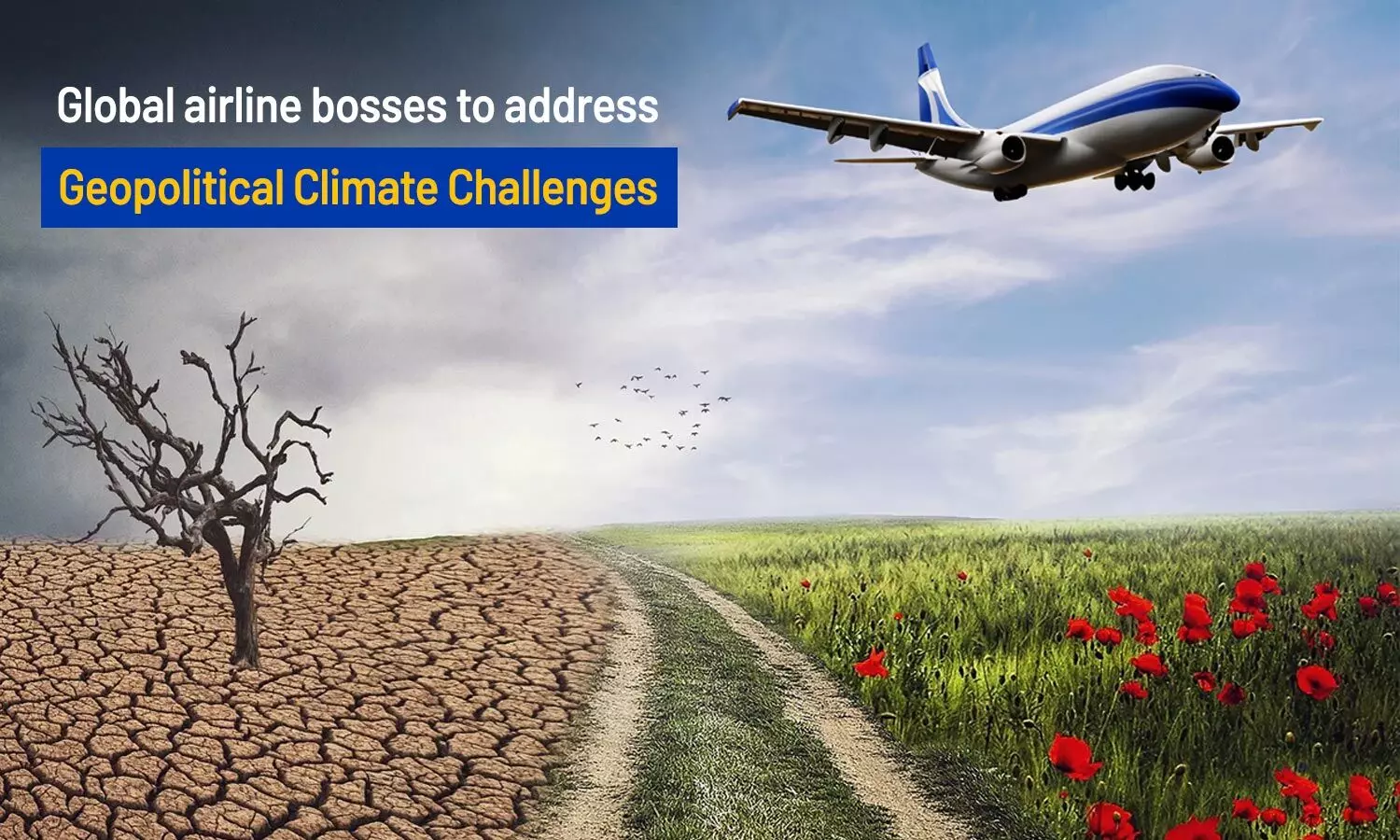Soaring Skies, Bumpy Landing: Global Airlines Navigate Geopolitical and Climate Challenges
Global airlines face turbulent times amid geopolitical tensions, climate change, and economic uncertainty. How will they adapt to soaring challenges?
Soaring Skies, Bumpy Landing: Global Airlines Navigate Geopolitical and Climate Challenges

The aviation business is unquestionably thriving. According to Cognitive Market Research, the global airline industry market size will be $548415.2 million in 2024. Furthermore, increased demand for passenger and freight aircraft is predicted to drive sales to $721676.98 million by 2031 at a CAGR of 4.00% from 2024 to 2031. In addition, according to the Ministry of Civil Aviation, India has emerged as the world's third-largest domestic aviation market, trailing only the United States and China. But while the skies are seemingly opening up for airlines, beneath the surface lurks a complex web of challenges, ranging from geopolitical tensions to the pressing issue of climate change.
In fact, that is just one side of the story. Climate change is also having a significant impact on the aviation industry. Disruptive weather is increasingly causing aircraft delays and cancellations, raising airlines' operational costs. Moreover, there is an increasing emphasis on lowering carbon emissions in the aviation industry, which necessitates considerable expenditures in new technology and infrastructure to reduce the environmental impact of air travel. So, let's delve into the challenges and how it is affecting the industry.
Significant Challenges
With the number of air travellers reaching record highs, the aviation industry has experienced unprecedented growth. However, beneath the soaring skies, global airlines face turbulent times. So, let's delve into the problems and explore potential solutions to ensure sustainable growth and stability in the future.
Geopolitical headwinds: The aviation industry has long been a barometer of global economic health. However, in recent years, it has encountered an increasing number of geopolitical obstacles. For instance, turbulence on Singapore Airlines and Qatar Airways in the month of May led to dozens of passenger and crew injuries that have put cabin safety and the link between climate change and turbulence in the spotlight. Thus, trade wars, regional conflicts, and the threat of terrorism have disrupted travel plans, raised operating costs, and undermined customer trust. Airlines have had to adjust to a more turbulent climate, negotiating complicated regulatory environments and managing political risk.
Climate Change: In addition to geopolitical challenges, the aviation industry is grappling with the pressing need to address climate change. Indeed, environmentalists argue that the industry's growth contradicts attempts to reduce emissions and that its aims, which are mostly based on sustainable aviation fuel, are insufficient. Furthermore, as a large emitter of CO2, accounting for around 2.5%, the sector is under increasing pressure to reduce its environmental impact. In fact, amidst the commotion, environmental organisations and customers are demanding more sustainable operations, and airlines are coming under growing scrutiny for their carbon footprint.
Industry Leaders Unite: A Solution
Currently, airlines are investing in innovative technology, such as sustainable aviation fuels and electric aircraft, to reduce their carbon impact and achieve emissions targets. However, the onus is not on any single group; it requires coordinated efforts. As a result, industry stakeholders must work together on measures such as carbon offset programs to counteract unavoidable emissions and contribute to a more sustainable aviation future.
In this environment, the prominent International Air Transport Association (IATA), which represents over 300 airlines and more than 80% of worldwide air traffic, recently held its annual meeting in Dubai, the world's busiest international hub, from June 2-4. The annual airline summit was set up to address these important challenges.
Since its inception in 1945, IATA has evolved from a price-setting organisation to a strong advocate for aviation's role in a globalised economy—underscoring the importance of unity in addressing the myriad challenges faced by the industry.
A Vision for the Future
Undeniably, the summit highlighted the importance of collaboration among airlines, governments, and industry partners to address these challenges. For example, the gathering comes as the Gulf, home to host carrier Emirates and smaller rival Qatar Airways, experiences a new phase of competition and expansion. In addition, Saudi and Indian airlines are bringing new capacity, and Saudi Arabia and the UAE have announced new mega-airport projects.
By coming together and sharing best practices, the aviation industry can forge a stronger, more adaptive future. The gathering sparked at the IATA summit offers a roadmap to navigate the complexities of a rapidly changing environment, shining a hopeful light on the industry’s path forward amid uncertainty.
In conclusion, while the skies may be filled with challenges, they are also ripe with opportunity. With determination and collaboration, global airlines can soar to new heights—transforming their bumpy landings into smooth transitions.

